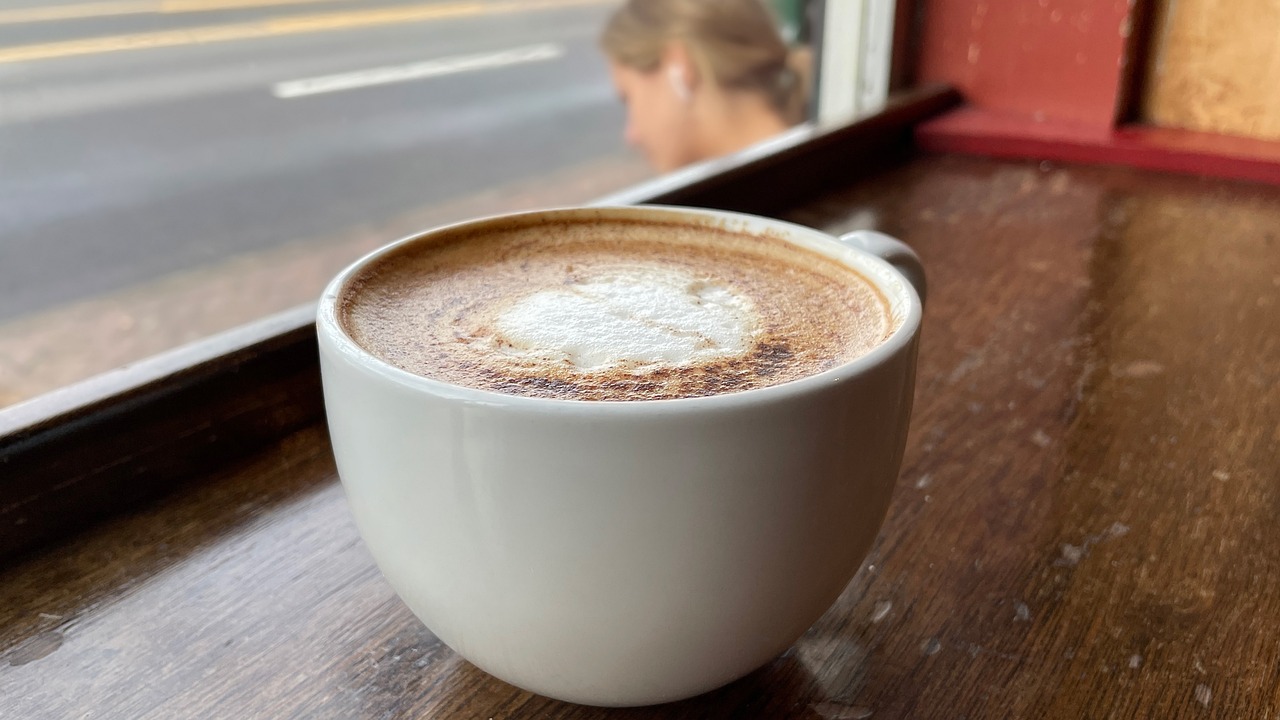Navigating the world of specialty beverages can sometimes feel like deciphering an ancient script—especially when trying to understand the caffeine content in our favorite drinks. Among the myriad of choices, the chai tea latte stands out as a beloved fixture in coffee shops and kitchens around the globe. But does this aromatic, spice-infused drink carry the same caffeinated punch as its espresso-based counterparts? In this comprehensive exploration titled “Does a Chai Tea Latte Have Caffeine?”, we delve deep into the heart of what makes a chai tea latte not just a drink, but an experience. Leveraging expert insights into tea cultivation, brewing techniques, and the intricate balance of spices that define a chai latte, we’ll unveil the mysteries of its caffeine content. This article is not only a journey through the sensory pleasures of tasting chai but also a guide that demystifies its effects on your energy and wellness. Whether you’re a chai aficionado or a curious newcomer, the revelations herein promise to enhance your appreciation for this timeless beverage while answering the pivotal question: Does a chai tea latte have caffeine? Join us as we steep ourselves in the art and science behind the chai tea latte, ensuring that every sip is both a delight and a discovery.
Definition, Origins, and Ingredients

Chai tea latte, often simply called chai latte, refers to a sweetened spiced tea drink made by blending a chai tea concentrate or spices with steamed milk. The term “chai” means “tea” in Hindi and several other languages from India. While traditional chai teas originated in India, the chai latte was popularized in the West as a coffee shop drink.
The unique blend of spices in chai tea provides its signature flavor. Common spices used include cinnamon, cardamom, ginger, cloves, and black pepper. These warming spices give chai its richness, complexity, and subtle kick. Black tea serves as the base, lending boldness from the natural caffeine and tannins. Sweeteners like honey or sugar balance the spice blend. The steamed milk adds creaminess and tempers the intensity.
Cultural Significance and History
Tea holds an important place in Indian culture. Originating in China, the tea plant came to India in the 1800s. India then transformed tea into their own unique beverage – chai. Adding milk and sugar helped counteract the bitter taste of the strong black teas grown in India.
Chai permeates everyday Indian life. Street chai stalls offer the drink freshly brewed. Households ritualistically prepare and share chai. The spiced tea provides a brief, pleasant escape from life’s pressures. Beyond India, the UK has fully embraced tea culture. The British introduced tea to India during their occupation. Now chai and its coffeehouse variation enjoy global fame.
Coffee also claims an integral role in many cultures. Its origins trace back over 1,000 years to Ethiopia. Coffee later spread through trade routes to Yemen and Arabia. Ottoman influence expanded coffee further into Europe. Colonization then brought coffee across seas to new territories.
Today, coffee culture thrives internationally. Espresso in Italy, café con leche in Spain, and café au lait in France headline coffee’s significance to daily life. Independent coffeehouses foster community. The coffee experience offers a comforting break from the workday.
Historical Evolution of Tea and Coffee Consumption
India’s tea tradition extends back over 190 years. In 1823, the British East India Company opened the first tea estates in Assam, India. This colonial endeavor aimed to break Chinese monopoly over tea. By 1900, India became a major tea producer.
India’s domestic tea culture then evolved. The chai masala spice blend emerged in the early 20th century. Street chai stalls, which mixed milk and sugar with brewed tea, grew ubiquitous for their convenience. Chai now ranks among India’s most popular drinks.
Coffee first originated in 800 A.D. Yemen popularized coffee as a beverage. Coffeehouses sprung up in Islamic societies to foster intellectual exchange. As the Ottoman Empire expanded, so did coffee. Soon houses serving coffee opened across Constantinople and Europe.
European colonization spread coffee across the globe by the 1700s. Coffee plantations arose in Asian and Latin American colonies. Coffee became the everyman’s drink of productivity and leisure. Today, coffee ranks second only to water in worldwide consumption. Over 2.25 billion cups get consumed per day.
Ingredients and Caffeine Content
Chai tea lattes contain four main ingredients – black tea, milk, sweetener, and spices. Additional mix-ins can include vanilla or chocolate syrup. The ingredients impact caffeine levels.
Black tea provides the core caffeine. A cup of brewed black tea has 47 to 90 milligrams of caffeine. More oxidized leaves yield more caffeine during brewing. The milk dilutes the concentration, while sweeteners do not affect caffeine.
Spices like ginger, cinnamon, and cloves add negligible amounts of caffeine. Cardamom may contribute slightly since it comes from the same plant family as tea. Overall, spices play a minimal role. An eight-ounce chai latte has about 35 milligrams of caffeine.
By comparison, a typical eight-ounce coffee has 70 to 140 milligrams of caffeine. Espresso has even higher concentrations at 240 to 720 milligrams per eight ounces. Factors like bean origin, roast type, and brew method influence coffee’s caffeine content.
Brewing Chai Latte
Chai lattes can be made from tea bags or from scratch. For tea bags, steep two chai tea bags in hot water for 3 to 5 minutes. Remove the bags and heat up one cup of milk. Mix the concentrated tea and steamed milk. Add sugar or honey as desired.
To make chai latte from scratch, combine 2 to 4 cups of water with chai spices in a pot. Simmer for 5 to 10 minutes then strain out spices. Stir in black tea leaves and steep for a few minutes. Remove leaves. Heat up milk in another pot until steaming. Combine spiced tea concentrate and hot milk. Sweeten to taste.
Customize the chai to your liking. Try different tea bases like green or oolong tea. Soy milk, almond milk, or half-and-half offer dairy-free or creamier options. For bolder spice, add extra ginger, clove, cinnamon, or black pepper. Cardamom and vanilla bring sweetness.
Health Benefits and Concerns of Tea and Coffee
In moderation, tea and coffee can benefit health. The spices in chai provide antioxidants that may lower inflammation and cholesterol. Black tea contains compounds linked to reduced risk of stroke and heart disease. Coffee also has antioxidants and may protect the liver and heart.
Caffeine affects health differently depending on the person. Caffeine may boost concentration, memory, and metabolic rate. But excess caffeine raises anxiety and disrupts sleep. Those with anxiety disorders or heart conditions should limit caffeine intake. Pregnant women should consume less than 200 milligrams daily.
Tea and coffee production impacts the environment. Methods like shade-grown coffee and organic tea farming help sustain biodiversity and reduce chemical pollution from pesticides. Consumers can purchase certified sustainable tea and coffee. Reusable cups or compostable pods also cut waste.
Global Markets and Local Economies
India leads global tea production at over 1.3 billion pounds annually, followed by China, Kenya, and Sri Lanka. Coffee giants Brazil and Vietnam each produce over 2.5 billion pounds yearly. Global demand for both keeps increasing.
The coffee and tea trades economically support millions of smallholder farmers. Fair trade certification aims to ensure fair labor practices and earnings. For consumers, buying local creates community sustainability. Independent coffee shops and local chai vendors circulate more profits through the neighborhood economy.
Trends in Specialty Tea and Coffee
Several notable trends shape today’s specialty tea and coffee scene. Cold brew iced coffee gained popularity for its sweeter, smoother taste. Nitro cold brew, made by infusing coffee with nitrogen, offers a frothy, cascading effect. Chai concentrates and chai-inspired syrups allow customization in coffee drinks.
Non-dairy milks changed the coffeehouse landscape. Shops now regularly offer almond, oat, soy, and coconut milk alternatives. Health-conscious consumers seek organic, low caffeine, and antioxidant-rich drinks. Premium single-origin beans and small-batch roasted coffees also attract specialty buyers.
Unique Chai Latte and Coffee Drinks
Chai tea lattes serve as the base for many distinctive specialty drinks. The dirty chai adds a shot of espresso for an extra caffeine punch. Iced or frozen chai lattes cool down the spicy tea. Pumpkin spice, matcha green tea, turmeric, or chocolate chai provide unique flavors.
Coffee shops innovate specialty coffee beverages like frozen blended mochas, Cuban coffee, Gibraltar, and affogato. Home baristas can also craft coffeehouse-worthy drinks. Make Greek frappé by shaking instant coffee with water and ice. Brew Vietnamese iced coffee with a slow-drip phin filter.
DIY Tips for Better Home Brewing
With basic equipment, anyone can achieve coffeehouse quality brews at home. Use a burr grinder for consistent grind size. Invest in a French press, Chemex, or cold brew maker. Pick fresh, high-quality beans with tasting notes you’ll enjoy. Measure coffee grounds by weight, not volume. Always use filtered water.
For tea, purchase loose leaf teas over bags for fresher, more robust flavor. Try different steeping methods like traditional teapots or gongfu ceremonies. Control strength by adjusting tea quantity, water temperature, and steep time. Use water just under boiling to avoid bitter tannins. Rinse teas like oolong to awaken leaves.
Food Pairings That Complement Coffee and Chai
Certain foods accentuate the pleasurable coffee and chai experience. Coffee’s bitterness balances sweet pastries like croissants, scones, and biscotti. Chai’s spices find harmony with spicy savory dishes like masala omelets or chickpea curries.
Milk and sugar in lattes make them a perfect match for breakfast. Pair an eggs benedict and chai latte or avocado toast and coffee. Coffee’s acidity cuts through rich desserts like tiramisu. Chai is delightful after cream-based Indian foods like paneer or korma.
Caffeine Content Comparison and Conclusion
Chai tea lattes contain less caffeine than coffee, averaging 35 milligrams per eight ounces compared to 70 to 140 milligrams in coffee. Factors like tea type, brewing method, coffee bean origin, and added milk impact caffeine levels. Coffee offers a bigger caffeine boost, while chai provides more milk and sugar.
Consider your caffeine sensitivity and taste preferences when choosing drinks. Those seeking comfort, spice, and gentle stimulation will savor chai lattes. Coffee drinkers wanting classic intense flavor or maximum caffeine increase will prefer their usual cup of joe. Both beverages hold cultural significance and offer cozy, caffeinated comfort through their own unique experiences.
Susan Muskat is a professional chef with over 25 years of experience in the culinary industry. After working in some of the most prestigious restaurants in the world, she opened her own restaurant, Moose and Sadie’s, which quickly became a local favorite. Susan is also the author of a blog all about recipes, guidelines, cooking tips, and knowledge from professional chefs. She loves nothing more than sharing her passion for food with others.








